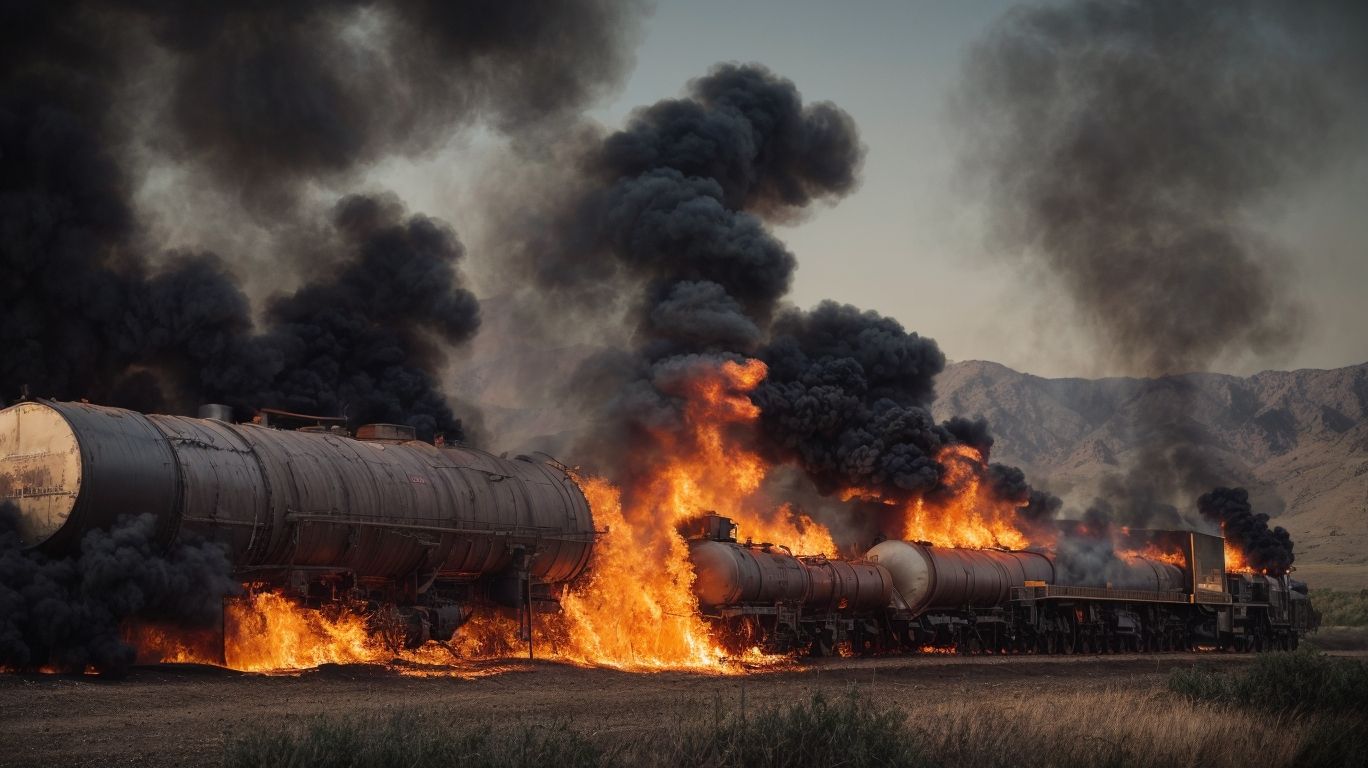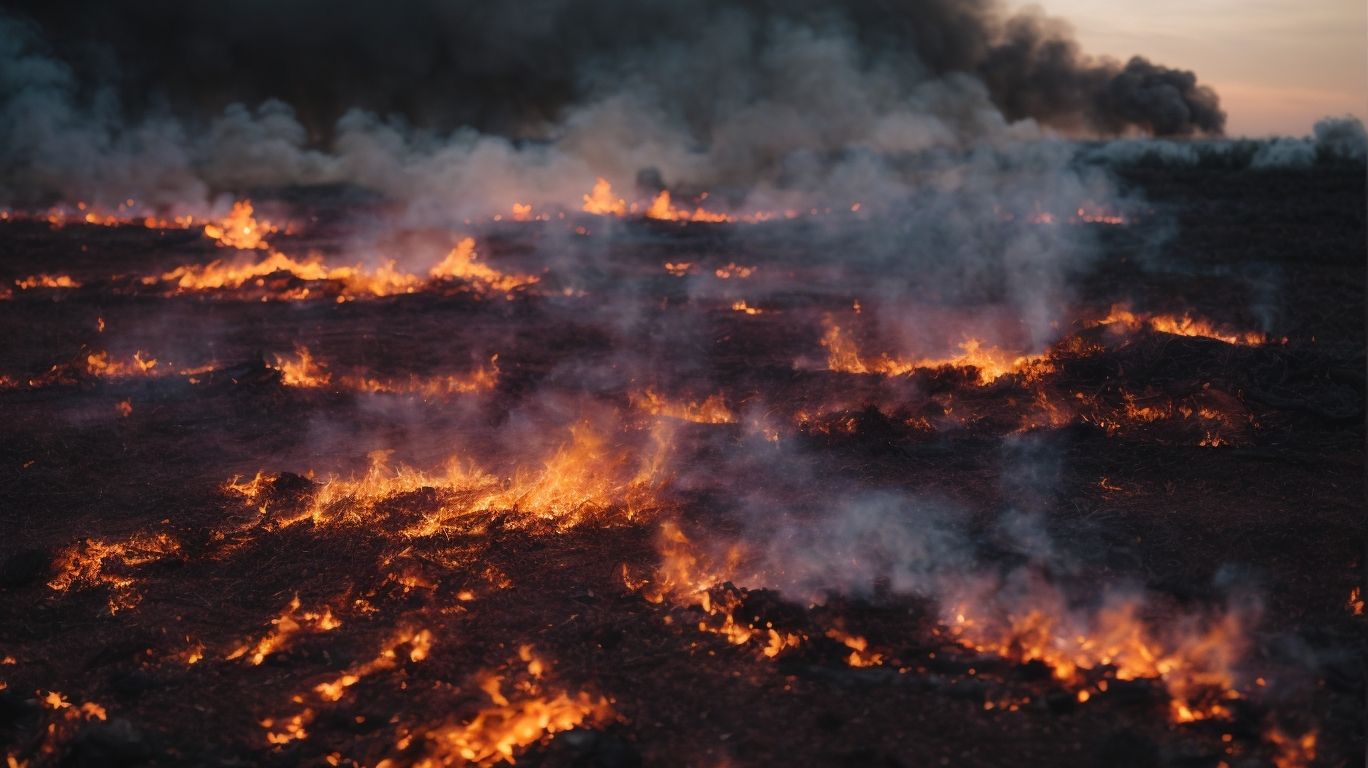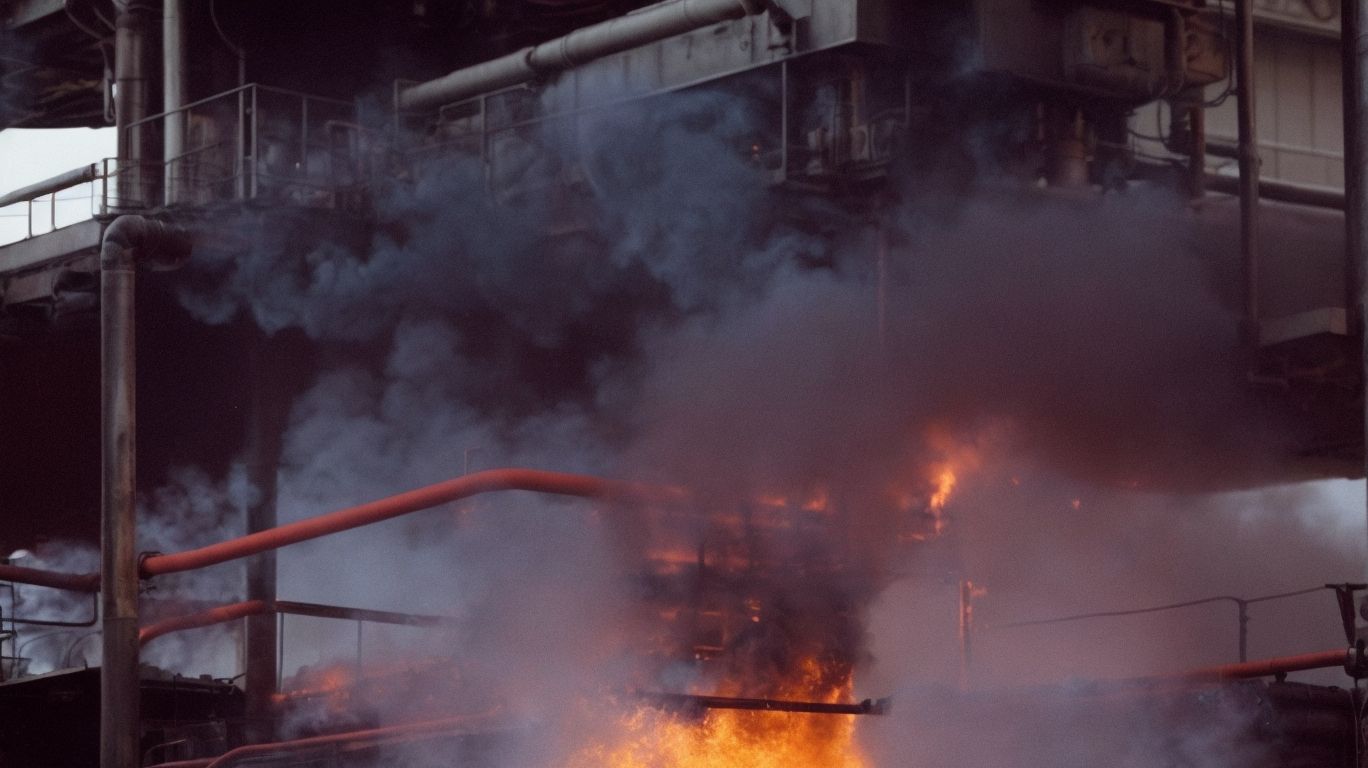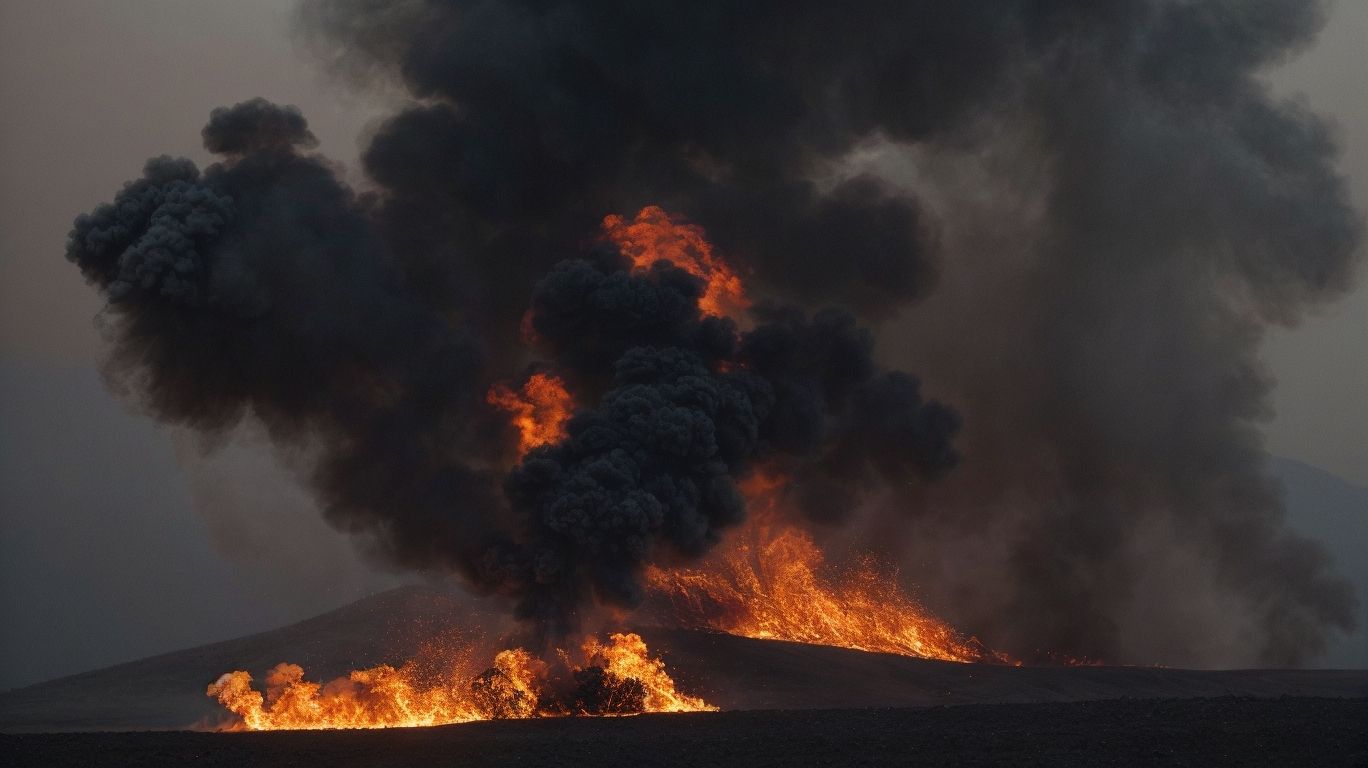Methane combustion is a chemical reaction that occurs when methane, a natural gas, is burned with the presence of oxygen. This process releases heat and energy, making it a vital source of energy for various industries and households. It is also an important contributor to climate change and has significant implications on the environment and human health.
The components of methane combustion are methane (CH4), oxygen (O2), and heat. When these elements are present, they undergo a chemical reaction, resulting in the formation of carbon dioxide (CO2), water (H2O), and energy. The chemical equation for this reaction is CH4 + 2O2 → CO2 + 2H2O + energy.
Methane combustion has several physical properties, including being a colorless and odorless gas, highly flammable, and lighter than air. It is also a greenhouse gas, meaning it contributes to the trapping of heat in the atmosphere.
The process of methane combustion involves several steps, starting with the ignition of methane and oxygen, followed by the release of energy and the production of carbon dioxide and water. This reaction is affected by factors such as temperature, concentration of reactants, and surface area. Higher temperatures and higher concentrations of methane and oxygen can lead to a faster combustion rate.
The implications of methane combustion are a significant concern, particularly in terms of its contribution to climate change. Methane is a potent greenhouse gas, with a higher global warming potential than carbon dioxide. As methane is burned, it releases carbon dioxide, further contributing to the warming of the Earth’s atmosphere.
Aside from its role in climate change, methane combustion also has adverse effects on the environment and human health. The extraction and transportation of methane gas can lead to the release of methane, increasing its concentration in the atmosphere. Inhaling methane gas can also cause dizziness, headaches, and suffocation.
In many industries, methane combustion is used as a source of energy for heating, cooking, and electricity production. It is also used in the production of other chemicals and fuels. While methane combustion has its advantages in providing energy, it also has disadvantages such as contributing to air pollution and greenhouse gas emissions.
In conclusion, methane combustion is a crucial process in our daily lives, but its implications must also be carefully considered. By understanding the process and effects of methane combustion, we can make informed decisions about its use and work towards mitigating its negative impacts on the environment and human health.
Key Takeaways:
What Is Methane Combustion?

Photo Credits: Chemicalglossary.Net by Donald Smith
Methane combustion is a chemical reaction that involves the reaction of methane, a hydrocarbon compound, with oxygen to produce carbon dioxide and water vapor. This highly exothermic reaction is a significant source of heat and is utilized in various applications. Methane combustion is integral in many industrial processes, including power generation and heating systems. However, it is also a major contributor to greenhouse gas emissions, as carbon dioxide is released as a byproduct. Therefore, comprehending the process and consequences of methane combustion is crucial in addressing climate change and investigating sustainable energy options.
What Are the Components of Methane Combustion?

Photo Credits: Chemicalglossary.Net by Sean Taylor
Methane combustion involves the reaction between methane (CH4) and oxygen (O2) in the presence of a spark or heat. The components of this process include methane, oxygen, carbon dioxide (CO2), and water vapor (H2O). This reaction can be represented by the equation: CH4 + 2O2 → CO2 + 2H2O. In addition to releasing heat and light energy, methane combustion is also useful for cooking, heating, and generating electricity. To optimize this process, it is important to ensure proper ventilation, maintain the appropriate fuel-to-air ratio, and utilize efficient combustion devices such as catalytic converters. Safety should always be a top priority, and considering sustainable alternatives can help reduce methane emissions.
What Is the Chemical Equation for Methane Combustion?
The chemical equation for methane combustion is CH4 + 2O2 -> CO2 + 2H2O. In this reaction, methane (CH4) combines with oxygen (O2) to produce carbon dioxide (CO2) and water (H2O). This process releases energy in the form of heat and light. Methane combustion is an exothermic reaction that occurs when methane gas reacts with oxygen in the presence of a spark or flame. This reaction is commonly used in various industries for energy production and heating purposes.
True story: One notable application of methane combustion is in natural gas-powered vehicles. By burning methane as fuel in the engine, these vehicles produce fewer emissions compared to traditional gasoline-powered vehicles, contributing to a cleaner and more sustainable transportation system.
What Are the Physical Properties of Methane Combustion?
Methane combustion has several important physical properties. Methane is a colorless and odorless gas at room temperature. It is lighter than air and highly flammable, requiring an ignition source to initiate combustion. When methane burns, it produces carbon dioxide and water vapor as byproducts. The combustion of methane also releases a significant amount of heat energy, making it a valuable fuel source.
Additionally, methane has a relatively low boiling point of -164 degrees Celsius, allowing it to be easily liquefied and stored for various industrial applications.
How Does Methane Combustion Work?

Photo Credits: Chemicalglossary.Net by Jack Hill
Methane combustion is a multi-step process that results in the production of energy, as well as the release of carbon dioxide and water vapor. Here is a breakdown of the steps involved in methane combustion:
- Ignition: Methane is first ignited using a spark or flame.
- Combustion: The heat from the ignition breaks down the methane molecule, resulting in the release of carbon dioxide (CO2) and water (H2O).
- Energy release: The combustion of methane produces both heat and light energy.
- Carbon dioxide emission: The carbon dioxide produced during combustion contributes to greenhouse gas emissions.
- Water vapor release: The water vapor produced adds moisture to the atmosphere.
To ensure efficient and environmentally-friendly methane combustion, it is crucial to properly regulate the air-fuel ratio and utilize combustion devices with high combustion efficiency. Additionally, implementing techniques for methane capture and utilization can help reduce greenhouse gas emissions and maximize the energy potential of methane.
What Are the Steps of the Combustion Process?
The process of methane combustion involves several steps that result in the release of energy and the formation of products. These steps include:
- Initiation: Methane molecules are heated to a high temperature, breaking the bonds between carbon and hydrogen atoms and creating free radicals.
- Propagation: The free radicals react with molecules of oxygen, producing carbon dioxide and water. This reaction releases a significant amount of heat energy.
- Termination: Eventually, the free radicals react with each other or other molecules, stopping the radical chain reaction and ending the combustion process.
Humans have been utilizing methane combustion for centuries. Ancient Chinese civilizations used methane gas as a fuel source for heating and cooking. In the nineteenth century, the invention of gas lamps and stoves fueled by methane revolutionized lighting and cooking practices. Today, methane combustion plays a critical role in various industries, including power generation and transportation. However, it also contributes to climate change due to the release of greenhouse gases during combustion.
What Are the Factors That Affect the Rate of Methane Combustion?
The rate of methane combustion is influenced by several factors.
- Temperature: Higher temperatures increase the rate of reaction as there is more energy available for the molecules to collide and react.
- Concentration: Increasing the concentration of methane results in a higher number of reactant molecules, leading to more collisions and a faster reaction rate.
- Presence of a catalyst: Catalysts can accelerate the reaction without being consumed themselves, providing an alternative pathway with a lower activation energy.
- Surface area: Greater surface area allows for increased contact between the reactants, promoting more collisions and a faster reaction.
What Are the Implications of Methane Combustion?

Photo Credits: Chemicalglossary.Net by Mason Martin
Methane combustion has significant implications for both the environment and human health. When methane, a potent greenhouse gas, is burned, it produces carbon dioxide and water vapor, releasing heat energy that can be utilized for various purposes. However, this process also has negative consequences, such as contributing to climate change by increasing greenhouse gas emissions and worsening air pollution. Additionally, methane leaks during combustion can be hazardous due to its highly flammable nature. Therefore, it is essential to comprehend and address the implications of methane combustion in order to promote sustainable energy production and minimize environmental impact.
How Does Methane Combustion Contribute to Climate Change?
Methane combustion plays a significant role in contributing to climate change as it has a strong greenhouse gas effect. The process involves multiple steps that release carbon dioxide, a potent greenhouse gas, into the atmosphere. These steps include:
- Burning of methane, which results in the production of carbon dioxide and water vapor.
- Carbon dioxide acts as a heat trap in the Earth’s atmosphere, leading to the greenhouse effect.
- The increased concentration of greenhouse gases, including carbon dioxide, contributes to global warming and climate change.
This process is a major contributor to climate change, as methane is a potent greenhouse gas with a much higher warming potential than carbon dioxide. By understanding and addressing the implications of methane combustion, we can take steps to mitigate its impact on the environment and reduce the effects of climate change.
What Are the Environmental and Health Effects of Methane Combustion?
Methane combustion has significant environmental and health effects. Burning methane releases carbon dioxide, which contributes to climate change as a potent greenhouse gas. Incomplete combustion can also produce carbon monoxide, a poisonous gas harmful to human health. Additionally, nitrogen oxides are produced during methane combustion, contributing to smog and respiratory issues. To minimize these effects, it is crucial to ensure efficient combustion and reduce methane emissions. Utilizing technologies such as catalytic converters and incorporating renewable energy sources can aid in reducing the environmental and health impacts of methane combustion.
How Is Methane Combustion Used in Industries?

Photo Credits: Chemicalglossary.Net by Richard Taylor
Methane combustion is widely utilized in industries for various purposes due to its high energy content and low emissions. Here are some examples of how methane combustion is used:
- Power generation: Methane is burned in power plants to produce electricity, providing energy for industries and households.
- Heating: Methane combustion is used for heating purposes in various industrial processes, such as in boilers and furnaces.
- Transportation: Methane can be used as a fuel for vehicles, either directly or in the form of compressed natural gas (CNG).
- Chemical production: Methane combustion is a crucial step in the production of chemicals like methanol and hydrogen.
- Waste management: Methane from landfills and wastewater treatment plants can be captured and utilized for combustion, reducing greenhouse gas emissions.
Considering the environmental impact, it is imperative for industries to optimize their methane combustion processes and explore alternative energy sources like renewable energy to decrease carbon emissions and mitigate the effects of climate change.
What Are the Industrial Applications of Methane Combustion?
Methane combustion is highly sought after in various industries due to its high energy content and low emissions. Some common uses include:
- Power Generation: Methane combustion is used in gas turbines and engines to produce electricity.
- Heating and Cooling: Methane combustion is utilized in furnaces, boilers, and heaters for heating spaces and industrial processes.
- Chemical Production: Methane combustion plays a crucial role in the production of chemicals such as methanol, formaldehyde, and acetic acid.
- Industrial Processes: Methane combustion is used in various processes such as metal smelting, glass production, and cement manufacturing.
An interesting real-life example is the use of methane combustion in a wastewater treatment plant, where methane gas produced from organic waste is captured and used for combustion to generate electricity. This not only reduces methane emissions but also decreases reliance on fossil fuels.
What Are the Advantages and Disadvantages of Using Methane Combustion?
Methane combustion offers both advantages and disadvantages in its usage. On the positive side, methane is a readily available and affordable fuel source. It produces fewer emissions compared to other fossil fuels, contributing to improved air quality. Additionally, its high heat output makes it efficient for industrial applications. However, there are drawbacks to consider. Methane is a potent greenhouse gas, and its combustion contributes to climate change. Moreover, methane leaks during extraction and transportation can offset its environmental benefits. Therefore, it is crucial to balance the advantages and disadvantages of methane combustion to determine its overall sustainability and impact.
One notable example of the positive effects of methane combustion is the case of a small rural community in Texas. They successfully converted their wastewater treatment plant’s methane emissions into energy, powering nearby facilities and saving on electricity costs. This innovative approach not only reduced greenhouse gas emissions but also provided a sustainable and cost-effective energy solution for the community.
Frequently Asked Questions
What is methane and what role does it play in combustion reactions?
Methane (CH₄) is a gaseous compound that is the simplest representative of the alkanes, a group of saturated or paraffin hydrocarbons. It plays a crucial role in combustion reactions as it is a highly flammable and energy-rich fuel source.
What is the flammability limit of methane and why is it important to know?
The flammability limit of methane is 5-15% concentration in air. This means that for methane to combust, it needs to be present in the air at a concentration within this range. Knowing the flammability limit is important for safety precautions and proper handling of methane.
What is the difference between qualitative and quantitative reactions in terms of methane combustion?
Qualitative reactions refer to the quality or nature of the products formed, while quantitative reactions measure the amount of reactants and products involved. Methane combustion is a qualitative reaction, as it produces water, carbon dioxide, and a large amount of energy, but does not involve precise measurements.
How does the combustion of methane produce electrical and thermal energy?
The combustion of methane produces a large amount of chemical energy, which is converted into thermal energy (heat) and mechanical energy. This mechanical energy is then used to generate electricity through turbines, making methane combustion a valuable source of both electrical and thermal energy.
What are the environmental implications of methane combustion compared to other hydrocarbon fuels?
When compared to other hydrocarbon fuels, methane combustion produces less carbon dioxide and more heat. This makes it a cleaner burning fuel source with less harmful chemicals and combustion gases released into the environment.
What is the chemical equation for the combustion of methane and why is it important to know?
The chemical equation for methane combustion is CH₄ + 2O₂ → CO₂ + 2H₂O + 891kJ. This equation shows the reactants and products involved in the reaction, as well as the amount of energy released. It is important to know for understanding the process of methane combustion and its implications.
